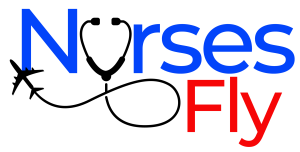Nursing Education and Reference Software as Electronic Source, Drug Guides as Electronic Version, Health Related Applications
Reference Software as Electronic Source In Nursing Education, Drug Guides as Electronic Version In Nursing Education, Health Related Applications In Nursing Education
Reference Software as Electronic Source In Nursing Education
Reference textbooks have always been available in print form, but electronic versions are not only more portable but can also change the way nursing care is practiced. Electronic references include drug information, laboratory test norms, medical terminology dictionaries, and guides to nursing diagnoses.
Students with mobile versions of these references can put in their pocket material that previously filled a bookshelf. The cost of these references is equivalent to the print version in most cases. One important difference is that, unlike paper textbooks, electronic versions of references cannot be sold or transferred to another user.
Most of these titles are sold on a subscription basis. Students purchase access to updates for a period of time ranging from months to years. Faculty should check with the software provider if the application is still usable after the subscription period ends. For some titles such as drug guides, it is important that students have current subscriptions so they are up-to-date with the latest drug information.
Additionally, most of these subscriptions include web-based access to the data for use on laptops or tablets via a web browser. Mobile computers can easily hold a wide variety of other reference texts. Medical dictionaries, diagnostic and laboratory test guides, and nursing practice guides are all available for mobile digital devices.
Nursing practice guides include references on nursing diagnoses, care planning, and physical assessment. These texts, such as the drug guides, can be updated by the publisher. Updates require a subscription of a length that can vary from months to years.
Most titles can still be used on a mobile device after the subscription ends but they will no longer be updated. Some titles will be appropriate for use after graduation and the student may wish to continue the subscription.
Drug Guides as Electronic Version In Nursing Education
Publishers of the major print drug guides now produce electronic versions for mobile computers that have identical information as the print guide, but offer several advantages. Finding drug information is far faster because the guide can be searched by trade or generic name by just typing a few letters in the search box.
Paper guides are usually organized by generic name or by type of drug; This requires the user to search through an index just to find the drug information. Electronic versions are also updated frequently. Instead of waiting for a new addition or a printed supplement, the electronic guides can be updated daily via the Internet.
Information on new drugs, black box warnings or banned drugs is then immediately available. Some guides come with additional features such as a pill finder that displays the image of actual pills. “Pill finder guides” help students learn what the pill should look like before administering it, and can be used with patients in home care settings who may be unsure of the identity of their pills.
Additional features such as drug dosage calculators and drug interaction checkers are also included in some guides. Several free drug guides are available for nurses. These guides are regularly updated and have many useful tools built in, but they usually do not contain the drug administration information and nursing considerations contained in the subscriptions.
Faculty should select an electronic health guide using the same criteria for content in the same manner as evaluating a paper guide, but also should assess the intuitiveness of the interface by practicing with familiar drug names and then evaluate how easy it is to find the needed information.
Health Related Applications In Nursing Education
Many applications are specifically designed for healthcare professionals. These include clinical calculators, assessment tools, specialized reference tools, and health care education apps. Other applications such as electrocardiographic monitoring, blood testing, glaucoma screening, and health assessment tools are now available or in development (Doswell et al., 2013).
Clinical calculators are used for determining a child’s growth percentile, the insulin needs for a patient with diabetes, or converting units of measurement. Assessment tools can speed assessment of patients using validated tools such as a pain scale, neurologic assessment, or behavior assessment. By asking the user a series of questions about the patient the tool can quickly calculate a score.
Health care applications can be obtained through the Apple iTunes app on iOS devices or with the Google Play app for Android devices and their cost is nominal. Faculty can direct students to specific applications with a link that can be used like a URL link to a web page. Students may also find applications that are useful for the needs of their particular patients.
Selecting an app for student use requires several steps. First, faculty (and students) should download and try several similar apps and evaluate their quality, ease of use, and applicability to the classroom or clinical experience (Skiba, 2014c).
Faculty must then verify that the data used in the application is referenced to recent research or peer-reviewed content. The decision for purchase must be based on cost, including licensing or subscription fees, and the benefit that students will derive from its use.
